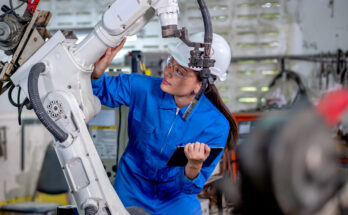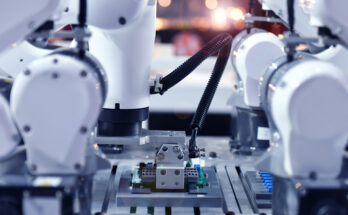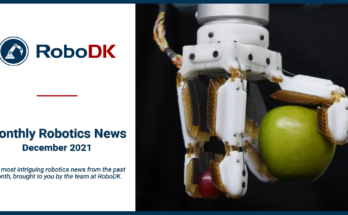New robot components appear every year. Which ones are right for you? How can you stay on top of the trends? Here are the latest types.
The new decade is upon us! This means a new set of robot components will arrive on the market. It also means more choice of which components you can use in your robot cell.
But, with more choice comes more possibilities for confusion. It’s hard to know which robot components are going to be the most important for you and for the wider robotics industry.
Here are 10 robot components that are set to be trends and should be on your radar…
1. Extra Axes
Traditionally, industrial robots have been limited to 6 axes or fewer. However, this limitation no longer exists. Additional axes are now more readily available than they have ever been before, making robot machining even more flexible.
The increase of axes is also a trend in the wider CNC machining industry. According to Xometry’s CNC Trends of 2020, recently “there have been improvements to machining hardware and equipment, making [extra axes] more capable and more affordable than ever before.” This allows manufacturers to reduce the number of setups they have to do and reduce machining costs.
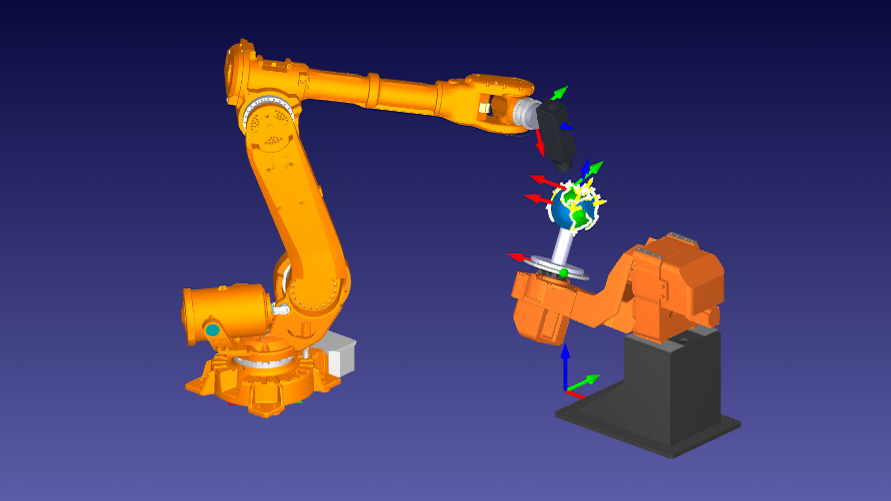
2. Tracks and Wheels
Tracks and wheels are both specific types of extra axes. They provide mobility, which is one of the newest additions to industrial robotics over the past few years. Mobile robots come in all shapes and capabilities, ranging from autonomous mobile robots to industrial robots mounted onto mobile platforms.
Full mobile robots can be challenging to program but a simpler option is to mount the robot onto a single axis or multi-axis track which can be programmed relatively easily.
3. 3D Vision
Vision has been an important component of robotic systems for decades. For a long time, it was complex and expensive but 3D vision has come a long way over the last decade and it’s now easier to use than ever.
3D vision is the next milestone in robotics. Although there are many systems available, they are still undergoing a process of improvement to make them easy to use.
According to the RoboGlobal 2019 trends report, 3D vision “looks set to explode” in the coming year as various new and established sensor manufacturers continue to improve the technology and demand increases.
4. Grippers
Qualcomm’s Chair of Robotic Systems Henrik Christensen called 2019 “the year of the robotic gripper” due to advancements in both hardware and software gripper technology.
Of course, grippers are certainly nothing new in robotics. However, over the last year, we’ve seen a lot of new grippers and manipulation applications. It doesn’t look like it will slow down. We’ve even seen some innovative robotic end effectors which look like they come from the future. They allow for grasping an even wider range of objects than was previously possible.
5. Tooling
Tooling options (e.g. drilling, milling, cutting) are getting better and more readily available every year. This is a great benefit both to manufacturers who use traditional CNC machines and to those who use robot machining.
Robot machining is an increasingly popular option for manufacturers. A robot can even outperform a CNC machine, especially in terms of their increased workspace, flexibility, and affordability. The rise in tool types and universal fixturing means that you can achieve a huge variety of machining operations with very little fuss.
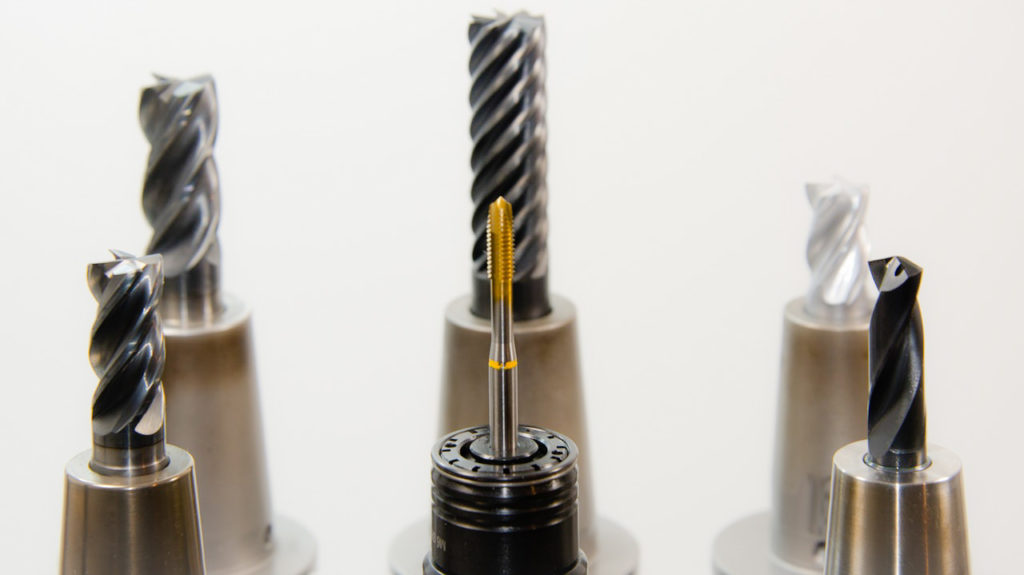
6. Cobots
Collaborative robots (aka cobots) are certainly popular right now. Over the last decade, they have gone from being of “questionable curiosity” to now being one of the most talked-about types of robot.
Cobots are basically normal industrial robots which have had safety measures added to make them safe to operate around humans with no safety fencing.
There are a ton of different cobots out there from a range of manufacturers, including big names such as ABB, Fanuc, and KUKA, to more specialist manufacturers like AUBO, Kinova, and Precise. Many of them can be found in our Robot Library.
7. Safe End Effectors
Continuing on the topic of safety, safer end effectors are also gaining popularity at the moment. These can range from the simple vacuum grippers to unique, deformable grippers.
The purpose of safe end effectors and tools isn’t only to allow safe operation around humans. Many of them also provide a more delicate touch for handling soft objects, such as soft fruits in the food processing industry.
8. Lasers
The idea of giving a laser to a robot might lead some people to imagine a science-fiction dystopian picture of the future. But, in manufacturing, it is just the next logical extension from a CNC laser cutter and engraver.
Laser marking with robots is growing in popularity due to the need for more traceability of products, for example in the automotive industry.
Programming this type of engraving application is very simple using offline programming and different types of end effector can be used to mark different materials.
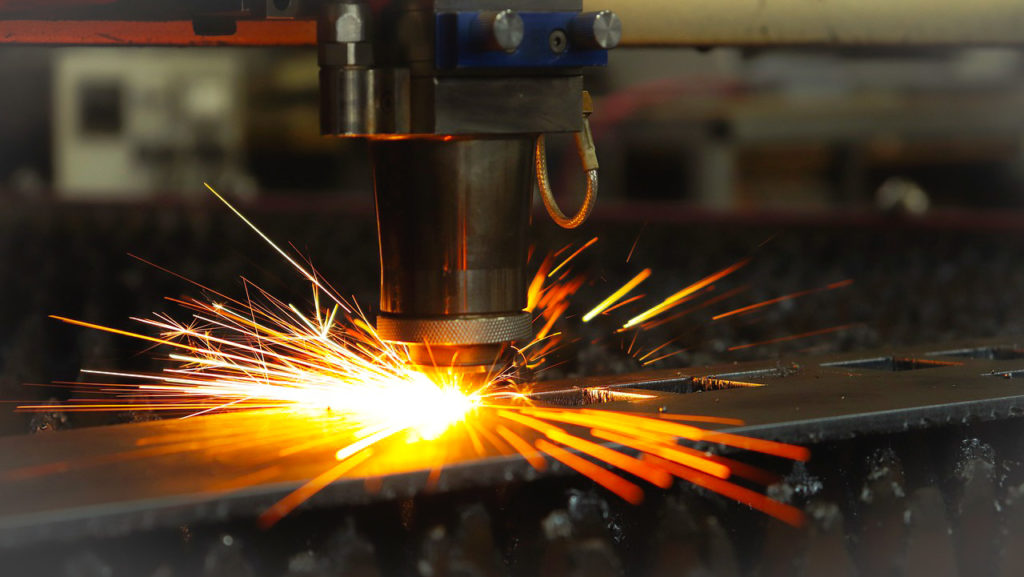
9. Small Components
One increasing trend right now is the diminishing size of some robots. There are now robots that go all the way down to the microscopic scale. All of their components are equally small, including grippers, links, and motors.
The smallest robot in our Robot Library is currently the Mecademic R3. It’s not exactly microscopic, but with a reach of only 330mm, it’s pretty tiny for an industrial robot.
This change to smaller scale robots suggests that people are moving away from the general-purpose robots of the past. Instead, they seem to be picking robots that suit the size needed for their specific application.
10. Smart Monitoring
Finally, the Internet of Things (IoT) is a trend that is certainly going to change robotics. Smart monitoring of robots means that they require less maintenance and improves the productivity by reducing downtime.
Whichever new components you choose for your robot, make sure that you are careful to only pick ones that will actually benefit your application. There are a lot of new components out there!
Which components would you like to see in the near futur? Tell us in the comments below or join the discussion on LinkedIn, Twitter, Facebook, Instagram or in the RoboDK Forum.


